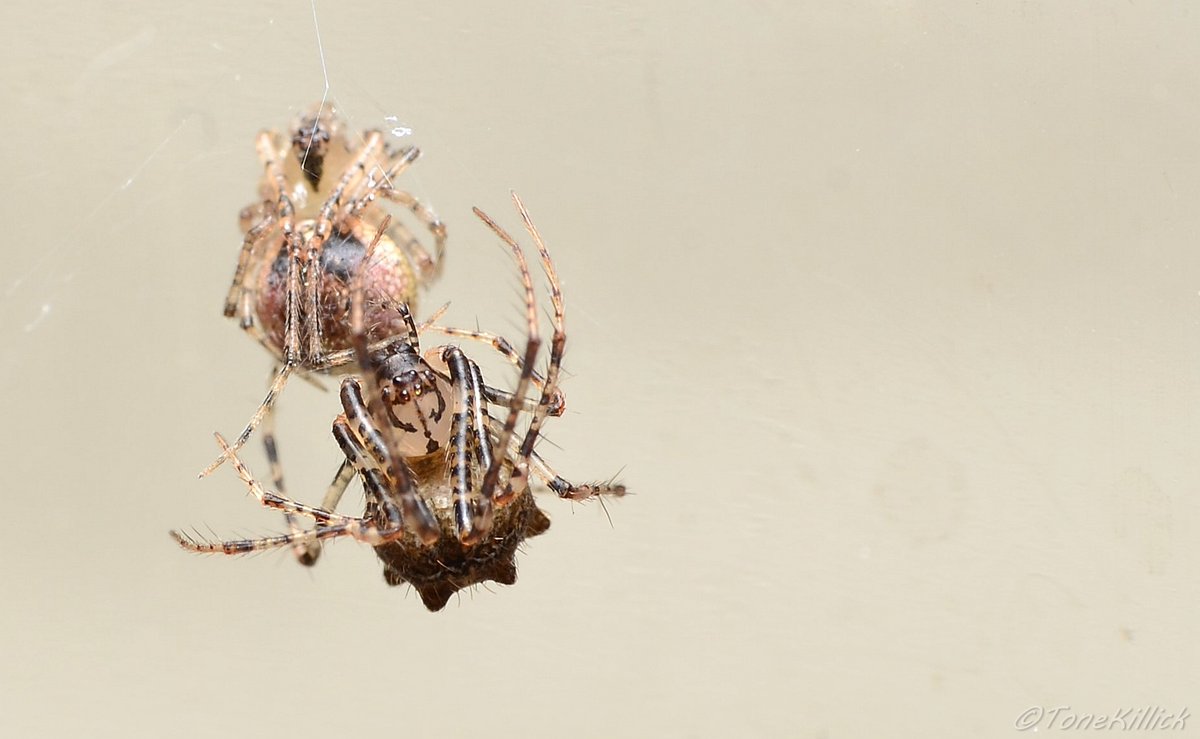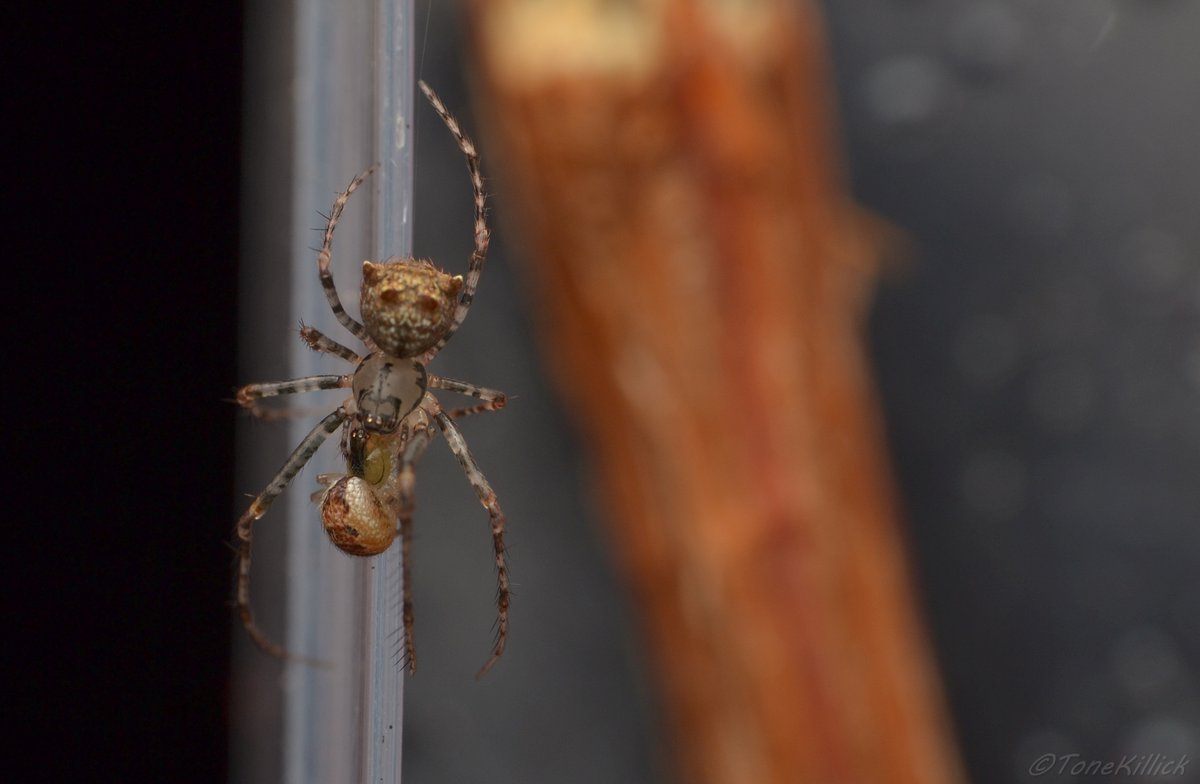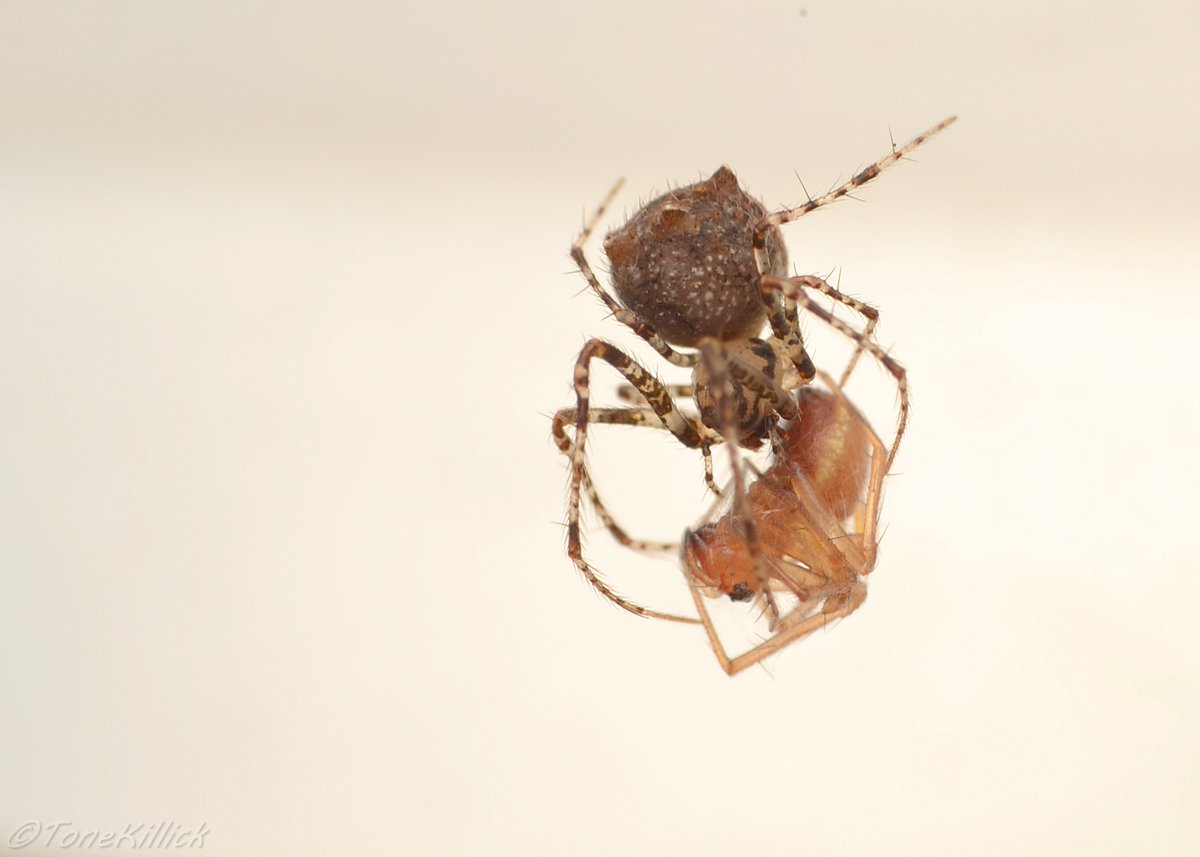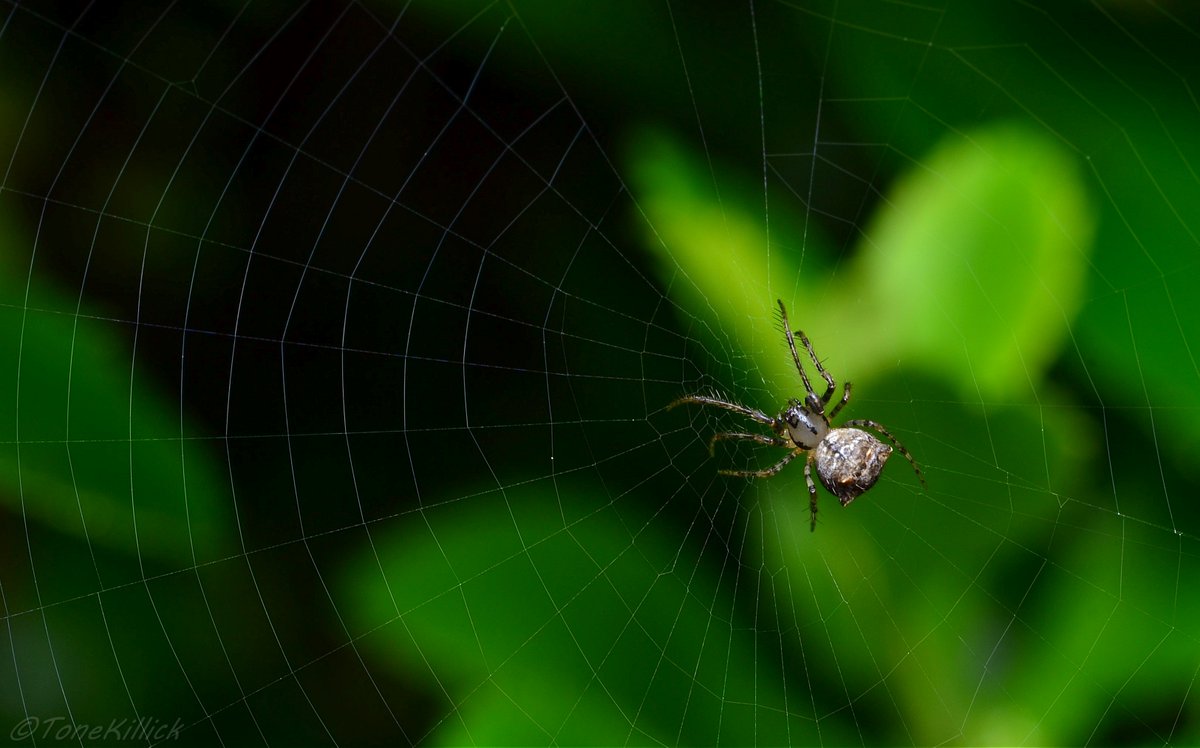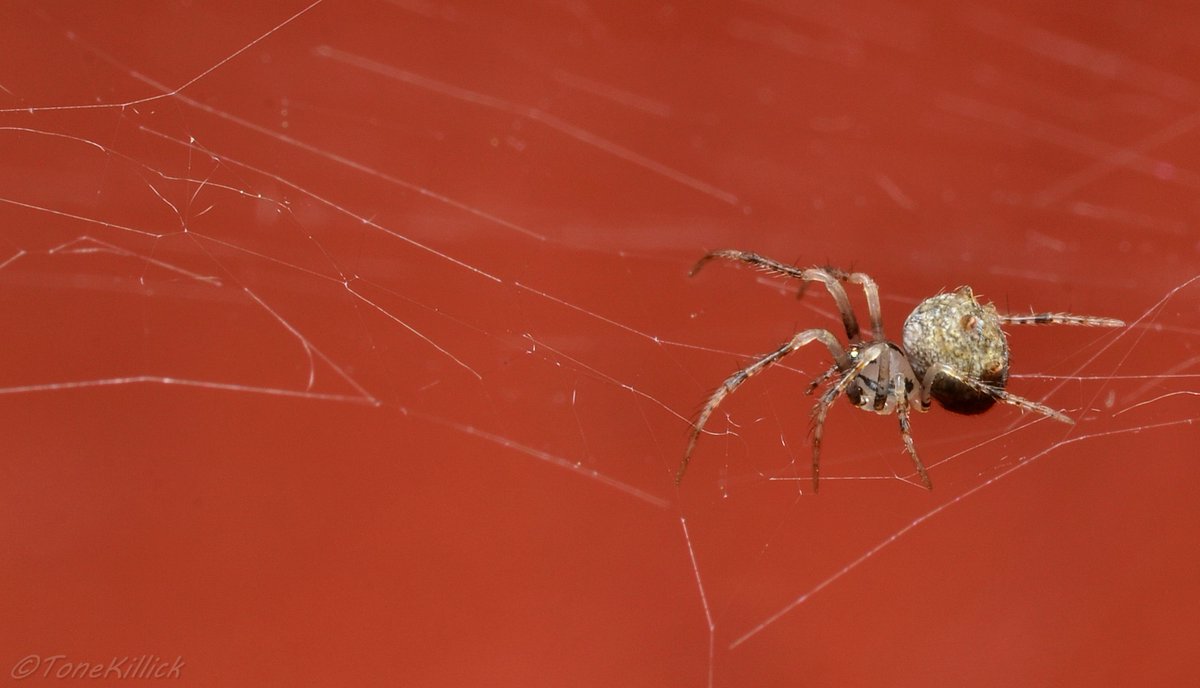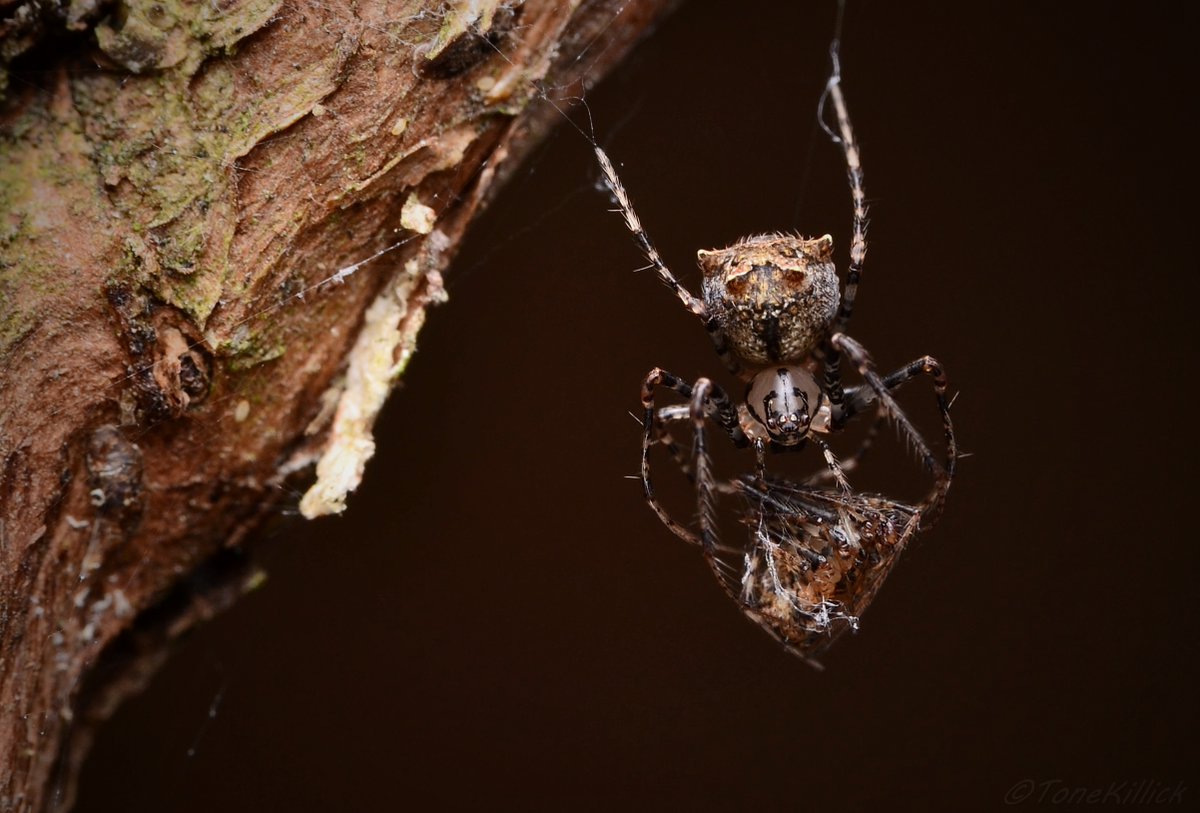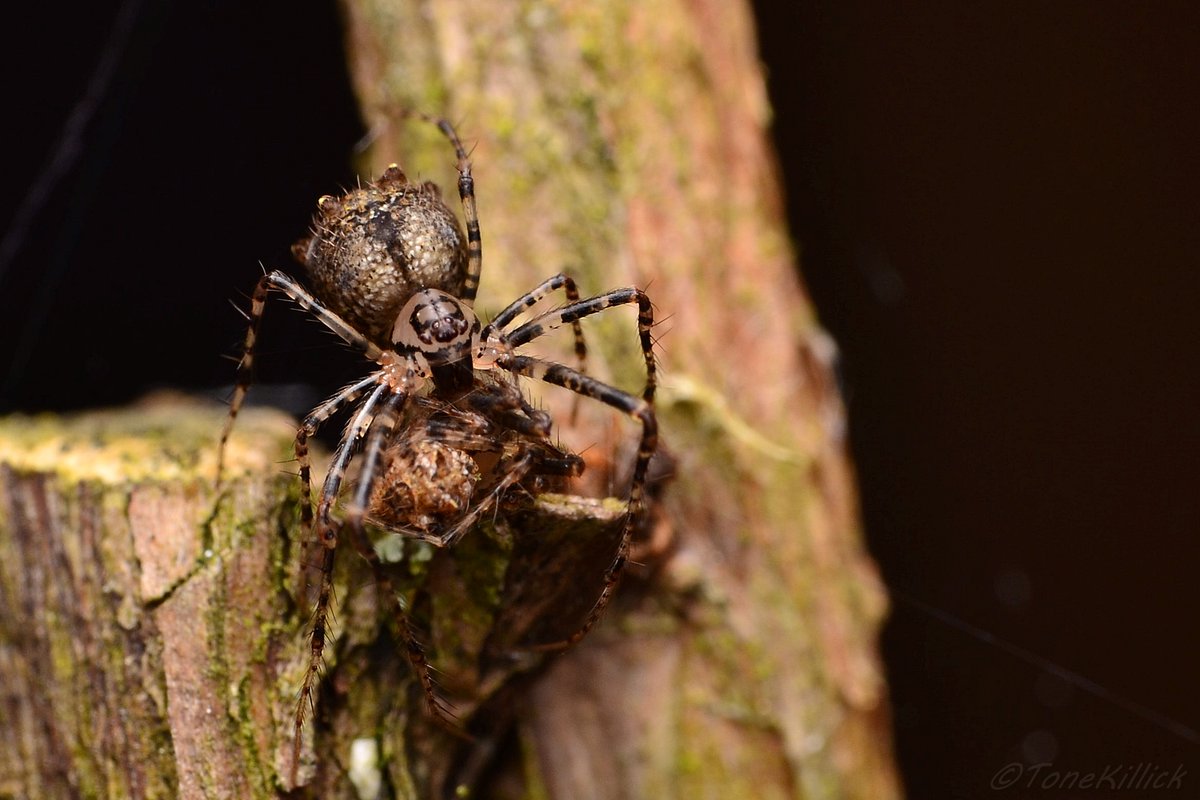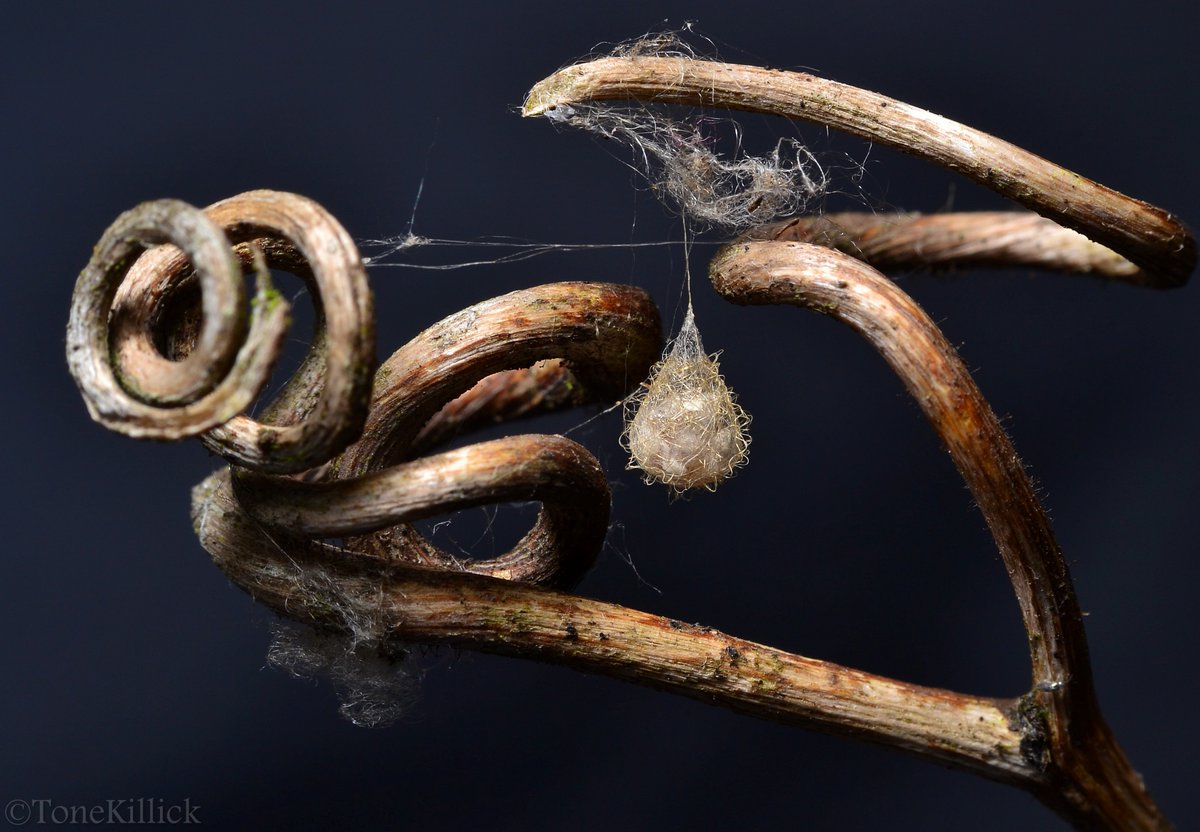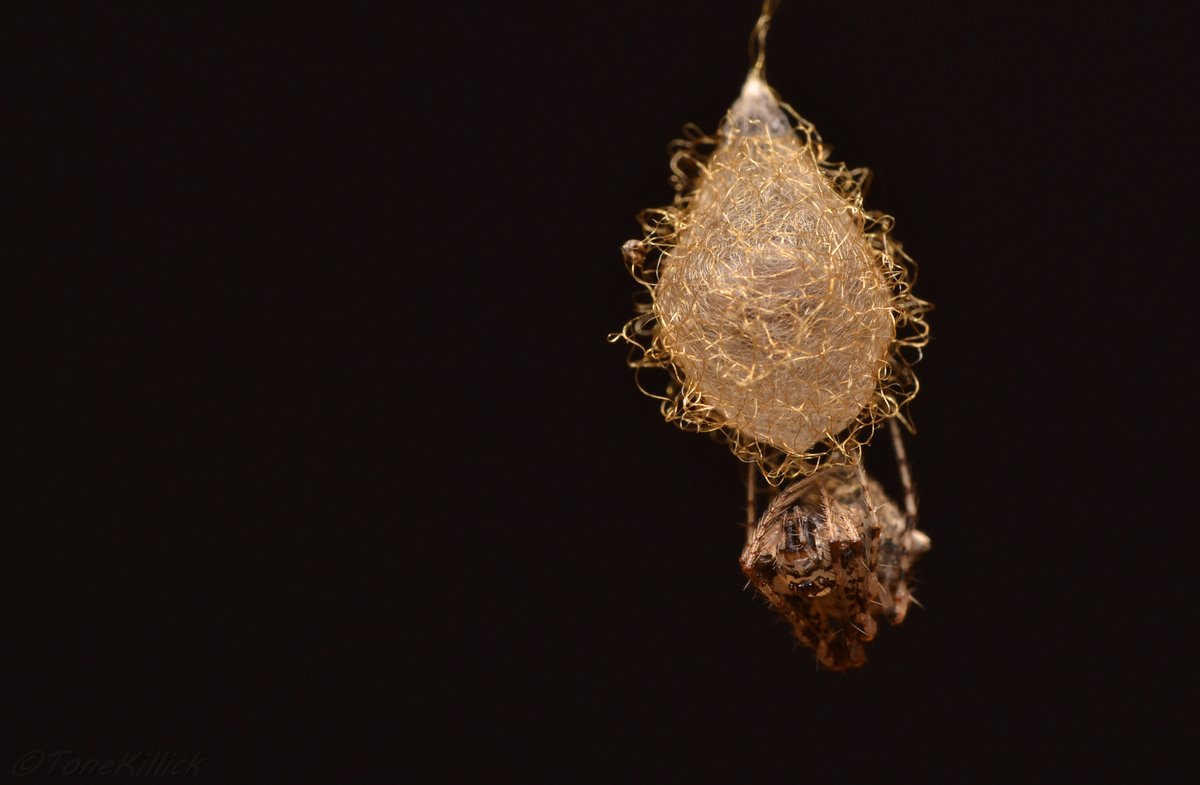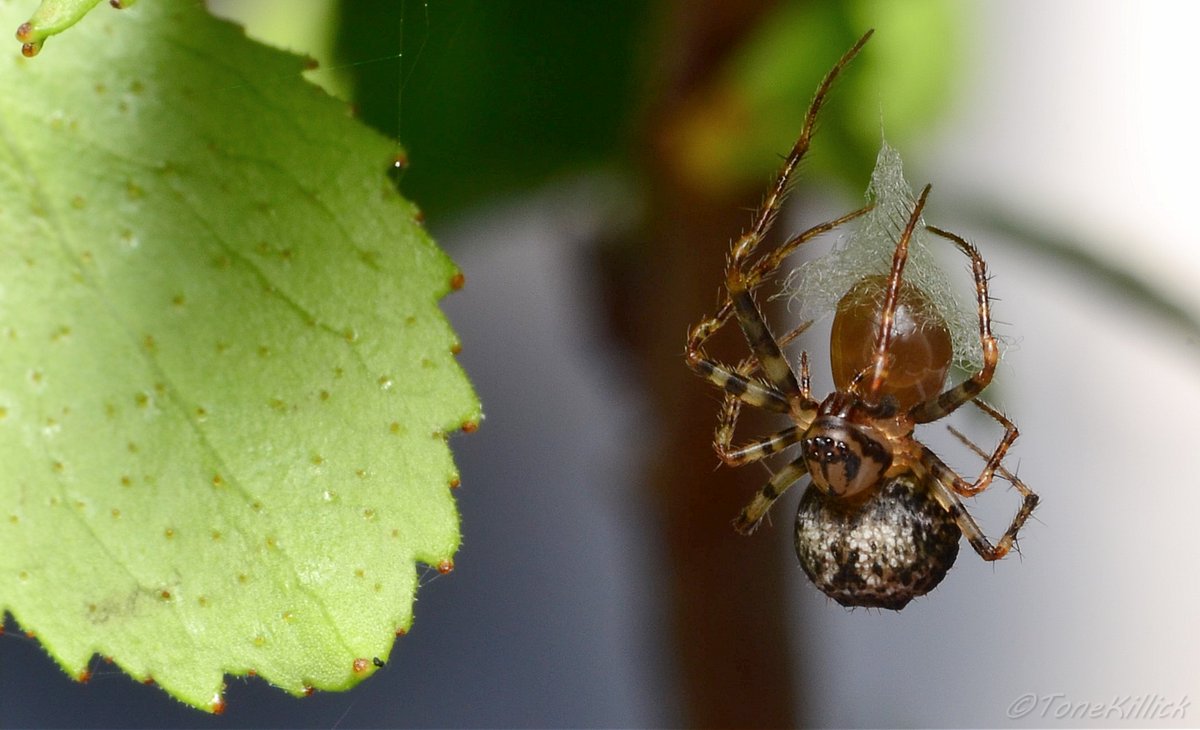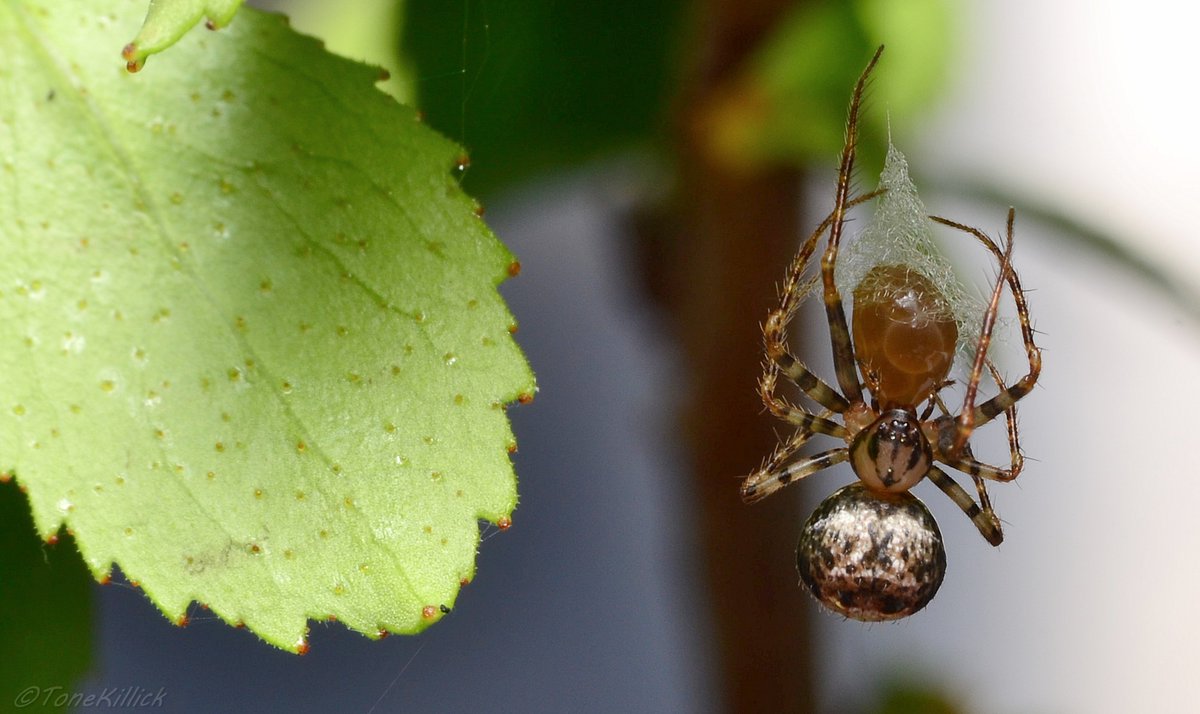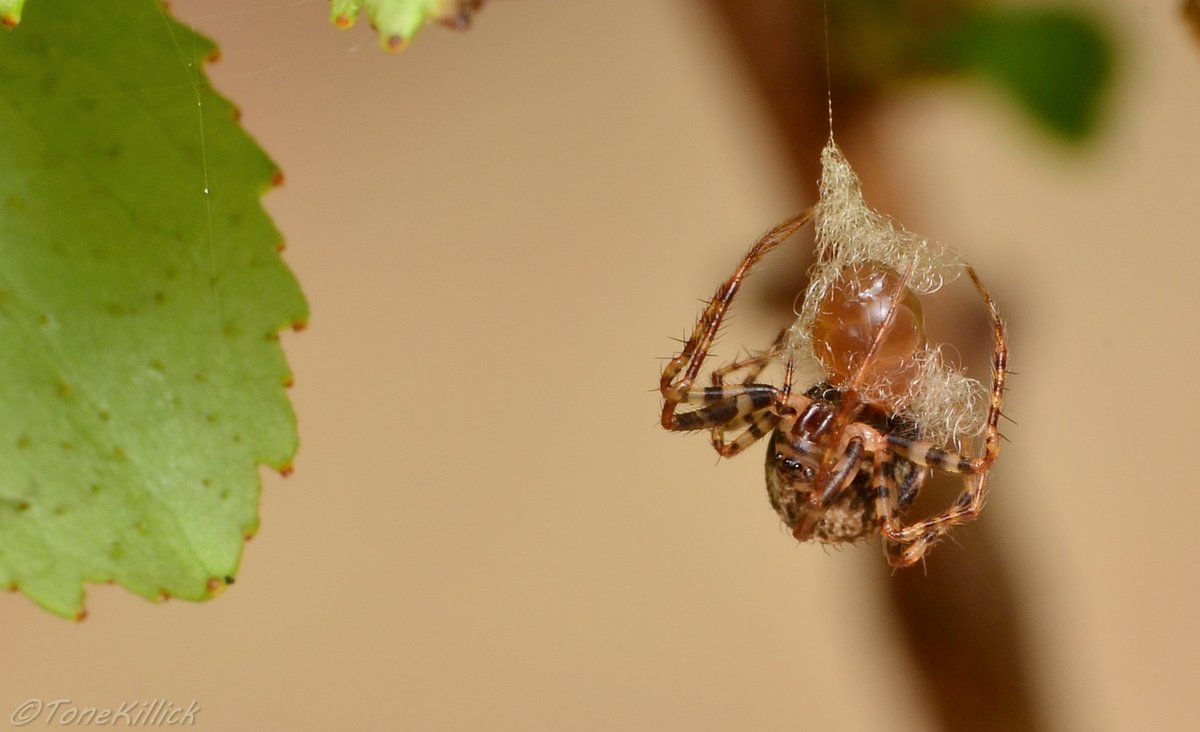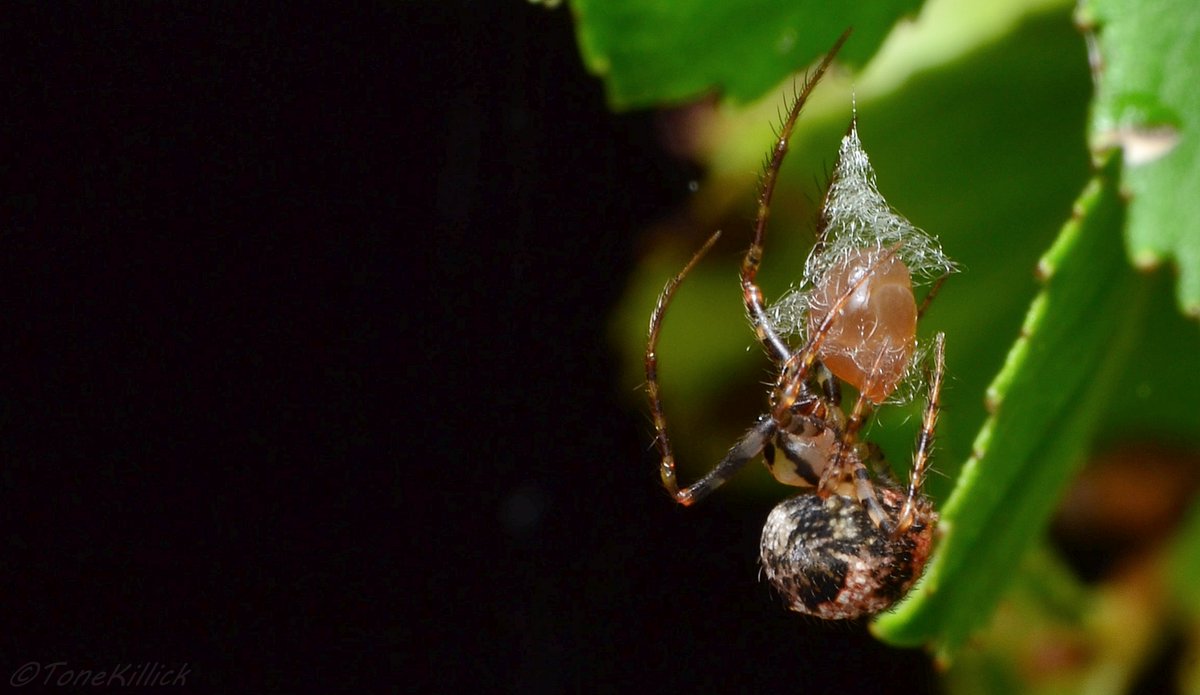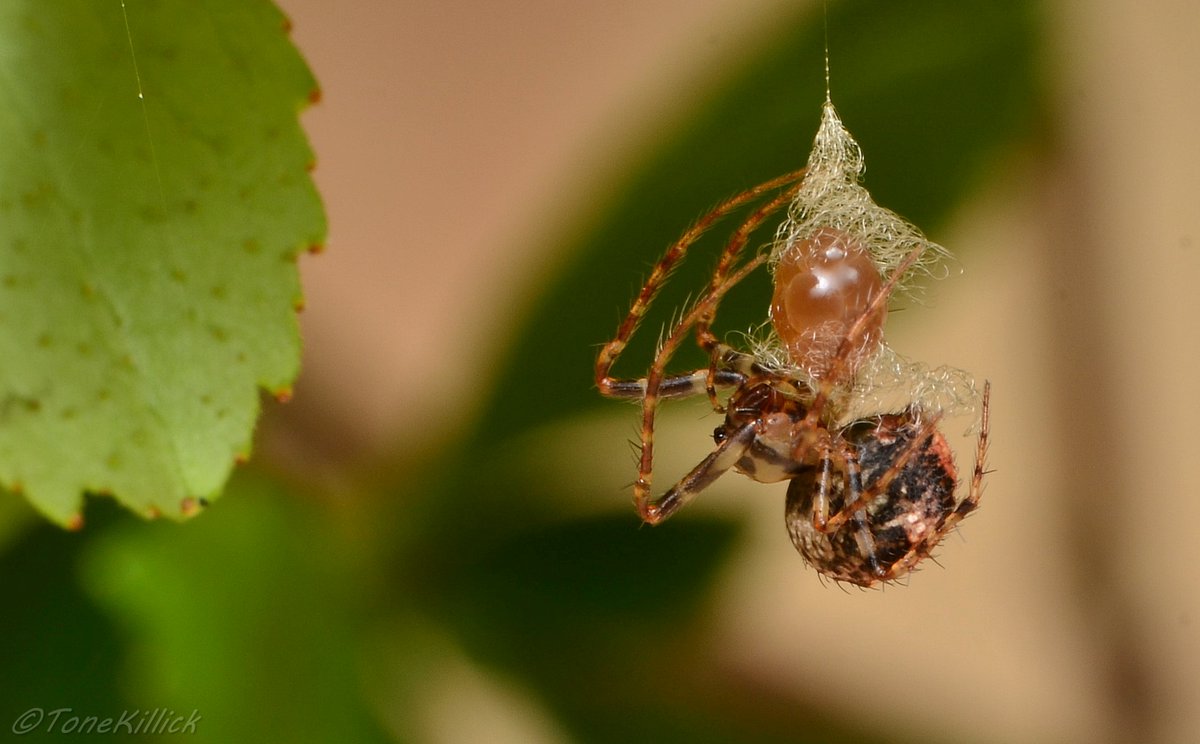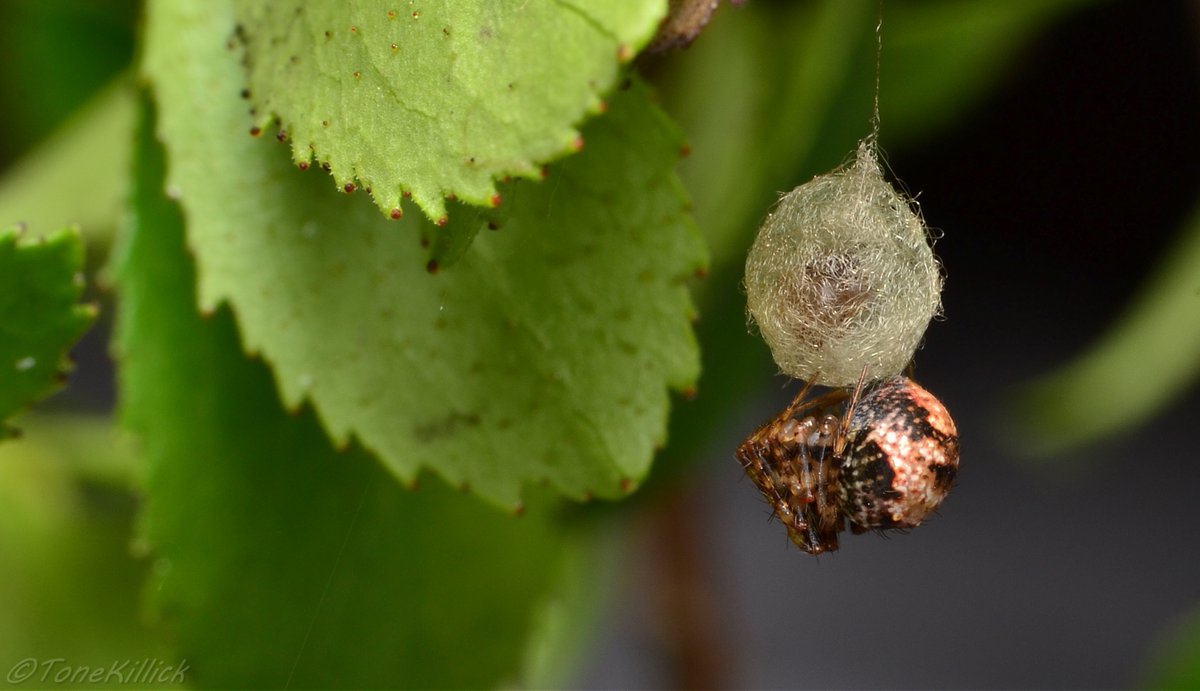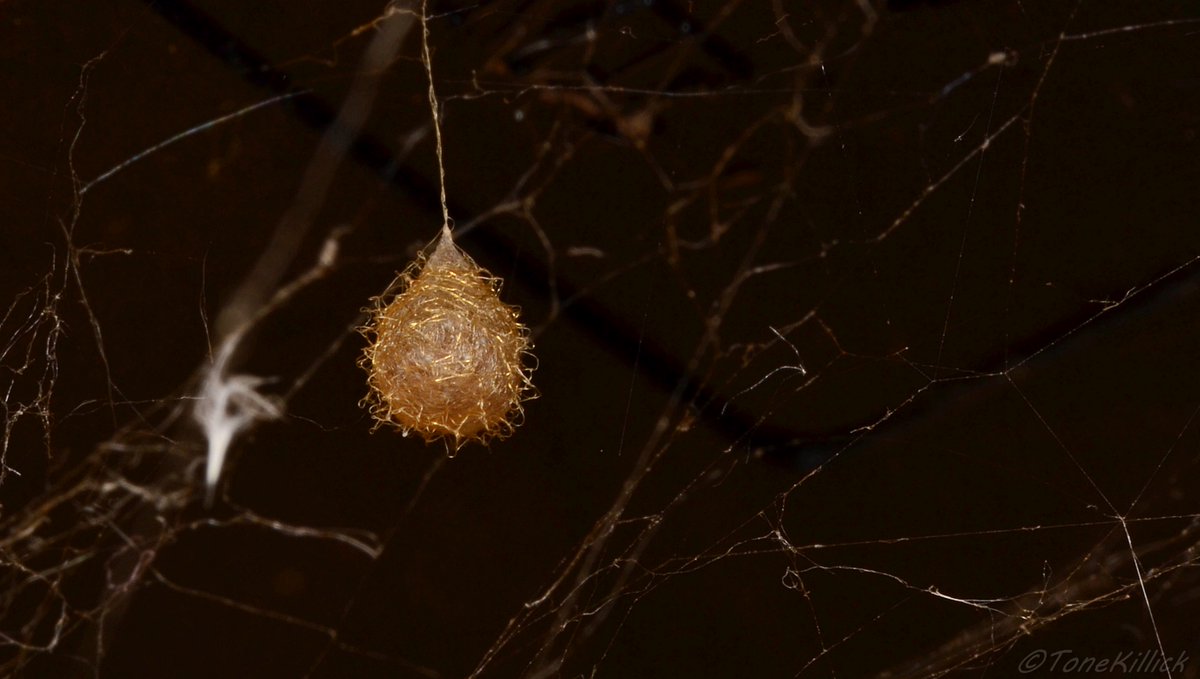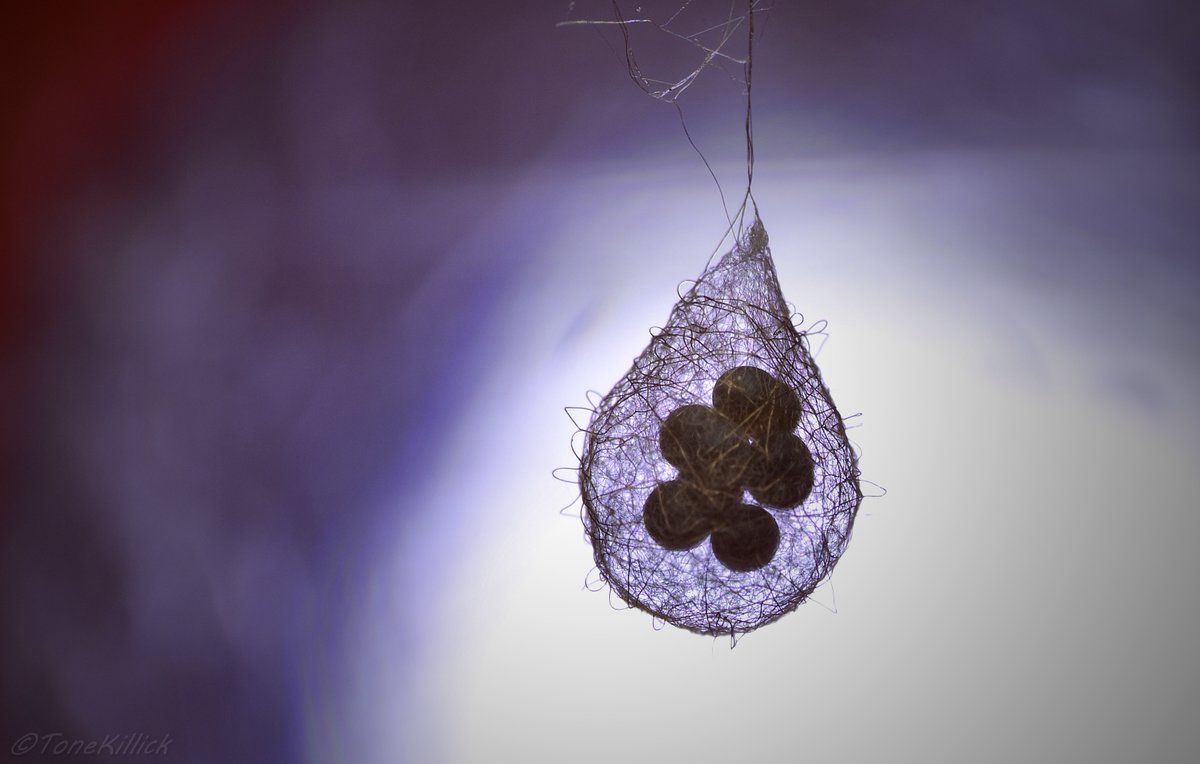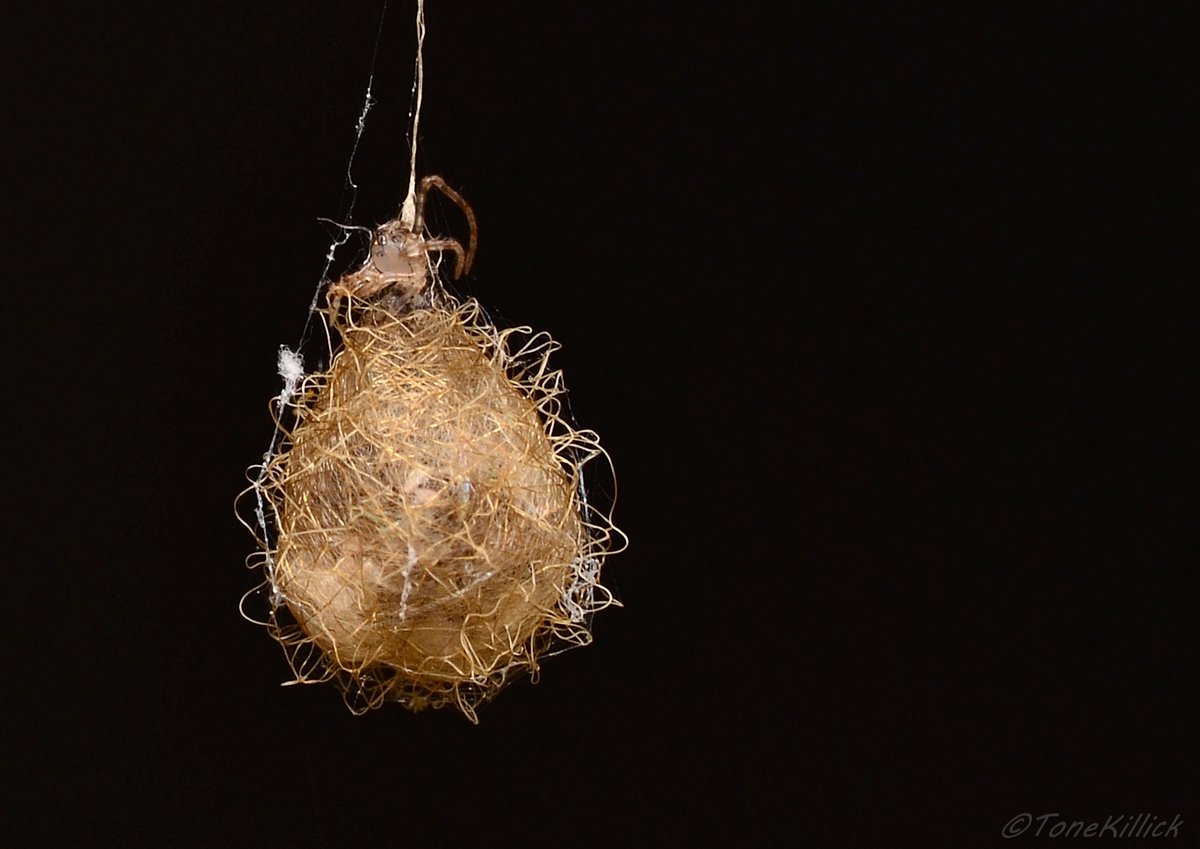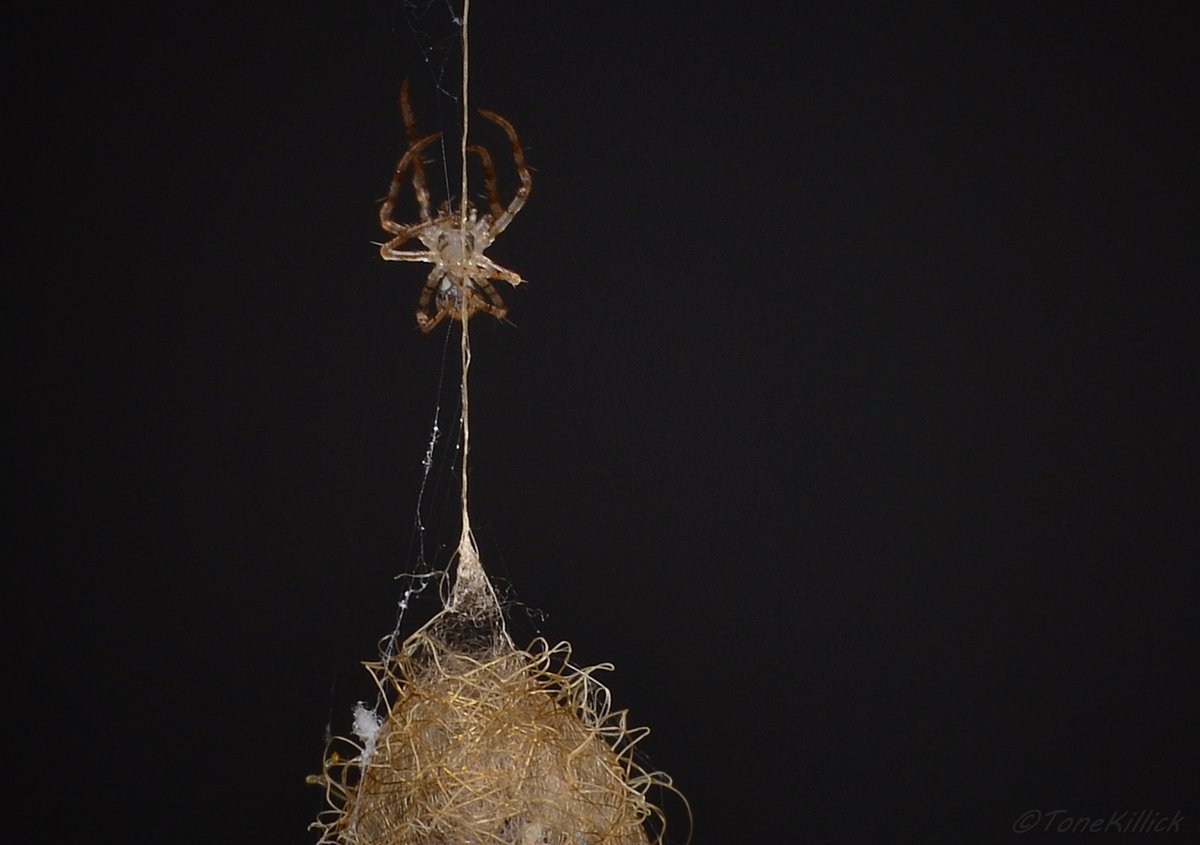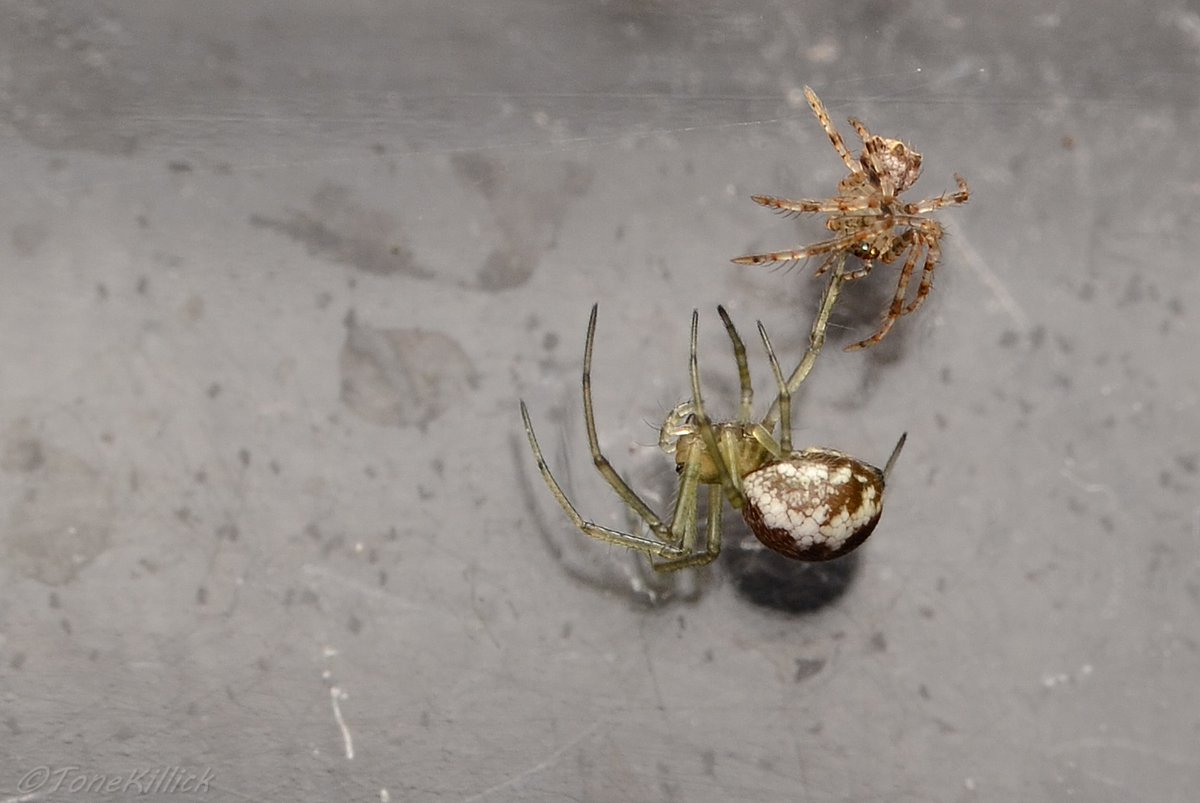In the UK we have 4 species of the araneophagic pirate spider Ero.
Ero aphana, E.tuberculata, E.furcata and E.cambridgei. #Educate #TurnFear2Fascination and #LoveSpiders
#Thread https://abs.twimg.com/emoji/v2/... draggable="false" alt="👇" title="Down pointing backhand index" aria-label="Emoji: Down pointing backhand index">
https://abs.twimg.com/emoji/v2/... draggable="false" alt="👇" title="Down pointing backhand index" aria-label="Emoji: Down pointing backhand index">
Ero aphana, E.tuberculata, E.furcata and E.cambridgei. #Educate #TurnFear2Fascination and #LoveSpiders
#Thread
Pirate spiders are tiny at around 3mm, cryptic and nocturnal which makes finding them no easy chore. As mentioned earlier these are araneophagic meaning they prey specifically on other spiders. So much for the easy life of flies and beetles!
Ero species generally prey on Araneids (orb weavers) and Theridiids (scaffold web weavers) by invading the hosts web. Two different behaviours are used. When invading a orb web the pirate spider will pluck at the strands to entice the host to approach.
It has been assumed that the pirate spider is imitating a fly but recent studies have shown that it could be more complex than that. Either way the plucking has the desired effect to lure the host to its doom.
In a Theridids web the pirate spider changes tactics and slowly ever so slowly stalks the host. Amazingly the host does not react as the cunning little pirate spider eventually becomes within touching distance and delivers the fatal bite.
Pirate spider venom is spider specific and after the initial first bite the prey is dead or incapacitated within seconds. This venom has obviously evolved due to the pirate spiders preferred prey which also has venom and fangs!
Mating in Ero species is extremely quick, just mere seconds. Did I mention that pirate spider venom is spider specific? Well, male pirate spiders are certainly not immune to the females potent venom!
Interestingly I have found that with Ero aphana, after successful copulation, the females do not readily accept any further males and will kill and consume others who attempt to mate. I suppose the upside is that the females fitness increases allowing for larger egg production.
In natural habitat you are far likely to find the wonderfully created egg sacs than the spider itself. Ero species are vagrants and once they have produced their egg sac abandon it.
But that being said, there is the one time that spider and egg sac could be seen together and this is shortly after the pirate spider has spent the exhausting process of producing the sac and is taking a well deserved rest.
The egg sac is produced by first creating an attachment point, then a hanging thread is creating. The spider than creates an inverted cone. Eggs are deposited onto this cone.
The pirate spider then extrudes silk which she collects onto her sternum before she wonderfully manipulates around the eggs with her legs.
Once completed the spider takes a well deserved rest. The shape and construction of pirate spider egg sacs, particularly the hanging thread is thought to act against predators.
My views are that the hanging thread does little to deter predators and is just part and parcel of the construction for this vagrant species. Ero species egg sacs are prone to attacks from parasitoid wasps and do not deter ants.
What I have noticed in my own garden over the last few years is that Ero aphana have adapted their behaviour and have produced their egg sacs in the webs of the formidable Steatoda nobilis, thus giving that added protection from predators.
I need to now refer to a specific species and that is Ero aphana. In their small life time of around 14 months the female will produce 2/3 egg sacs with each containing between 4-8 eggs.
After an incubation period of around 25 - 33 days depending on humidity and temperature the spiderlings will emerge from a small hole that they create at the top of the sac.

 Read on Twitter
Read on Twitter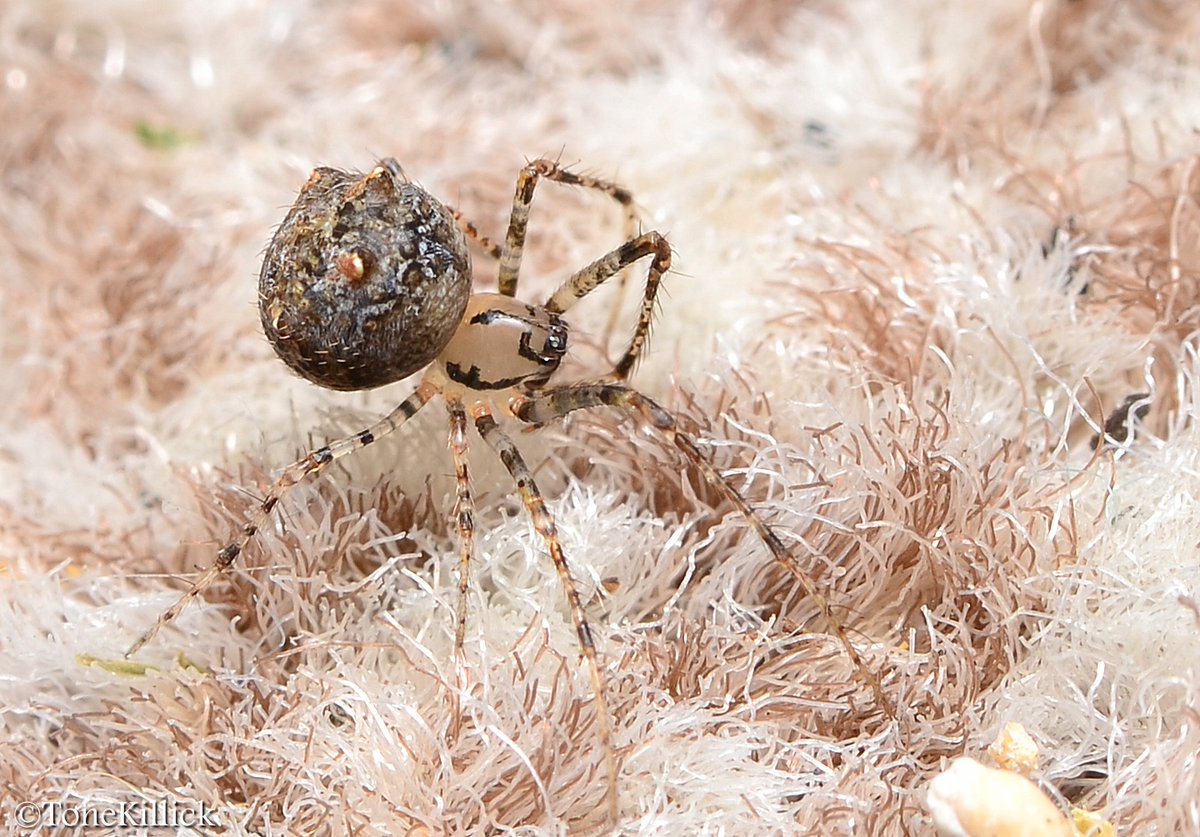 " title="In the UK we have 4 species of the araneophagic pirate spider Ero.Ero aphana, E.tuberculata, E.furcata and E.cambridgei. #Educate #TurnFear2Fascination and #LoveSpiders #Thread https://abs.twimg.com/emoji/v2/... draggable="false" alt="👇" title="Down pointing backhand index" aria-label="Emoji: Down pointing backhand index">">
" title="In the UK we have 4 species of the araneophagic pirate spider Ero.Ero aphana, E.tuberculata, E.furcata and E.cambridgei. #Educate #TurnFear2Fascination and #LoveSpiders #Thread https://abs.twimg.com/emoji/v2/... draggable="false" alt="👇" title="Down pointing backhand index" aria-label="Emoji: Down pointing backhand index">">
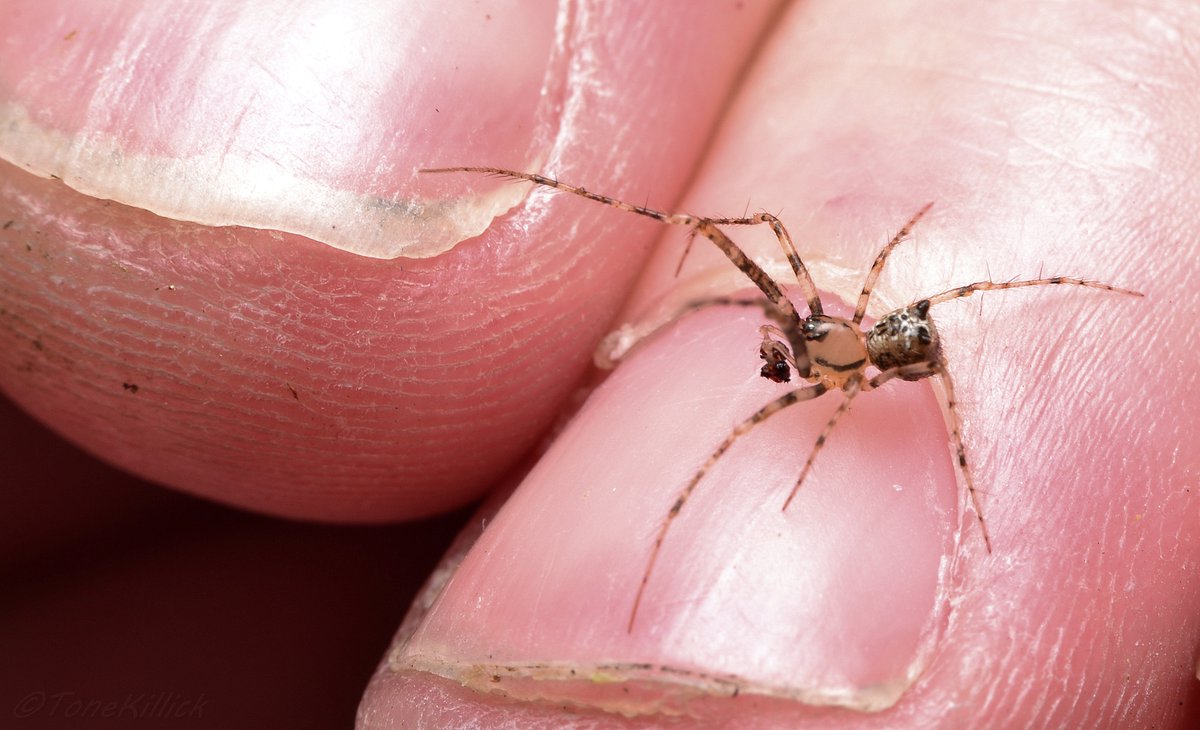 " title="In the UK we have 4 species of the araneophagic pirate spider Ero.Ero aphana, E.tuberculata, E.furcata and E.cambridgei. #Educate #TurnFear2Fascination and #LoveSpiders #Thread https://abs.twimg.com/emoji/v2/... draggable="false" alt="👇" title="Down pointing backhand index" aria-label="Emoji: Down pointing backhand index">">
" title="In the UK we have 4 species of the araneophagic pirate spider Ero.Ero aphana, E.tuberculata, E.furcata and E.cambridgei. #Educate #TurnFear2Fascination and #LoveSpiders #Thread https://abs.twimg.com/emoji/v2/... draggable="false" alt="👇" title="Down pointing backhand index" aria-label="Emoji: Down pointing backhand index">">
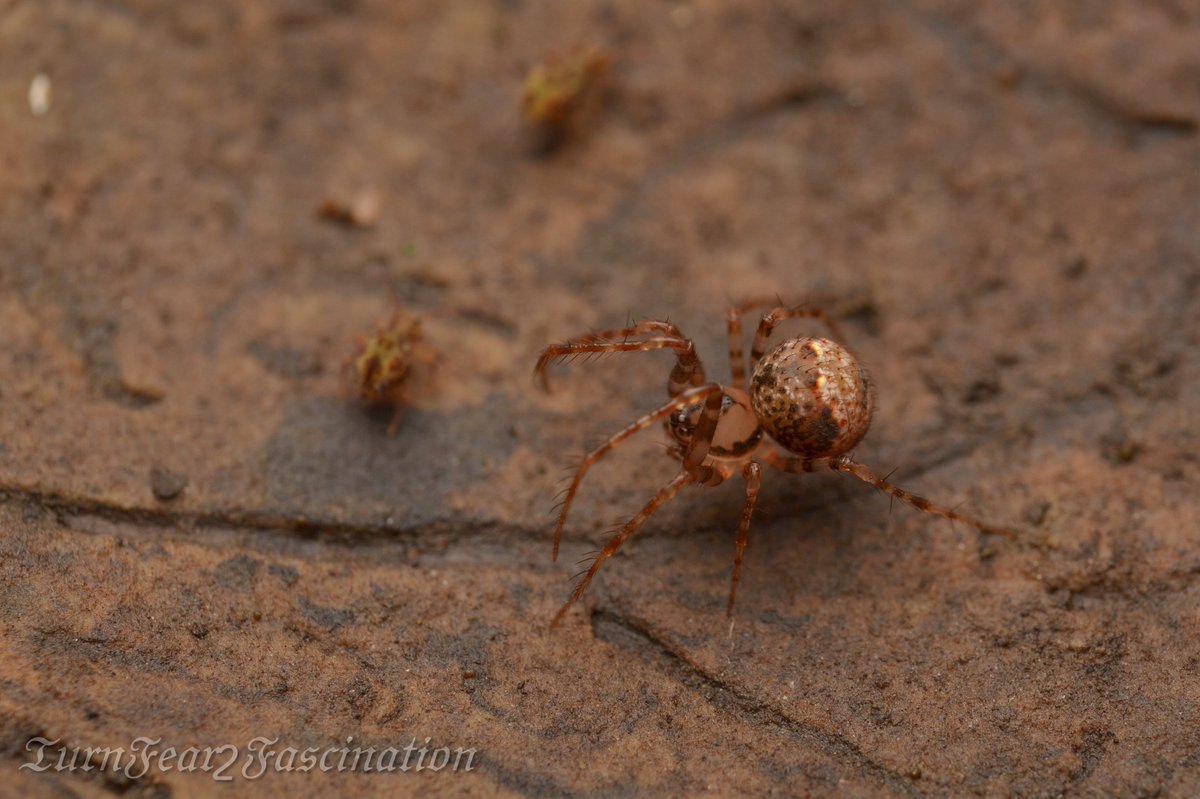 " title="In the UK we have 4 species of the araneophagic pirate spider Ero.Ero aphana, E.tuberculata, E.furcata and E.cambridgei. #Educate #TurnFear2Fascination and #LoveSpiders #Thread https://abs.twimg.com/emoji/v2/... draggable="false" alt="👇" title="Down pointing backhand index" aria-label="Emoji: Down pointing backhand index">">
" title="In the UK we have 4 species of the araneophagic pirate spider Ero.Ero aphana, E.tuberculata, E.furcata and E.cambridgei. #Educate #TurnFear2Fascination and #LoveSpiders #Thread https://abs.twimg.com/emoji/v2/... draggable="false" alt="👇" title="Down pointing backhand index" aria-label="Emoji: Down pointing backhand index">">
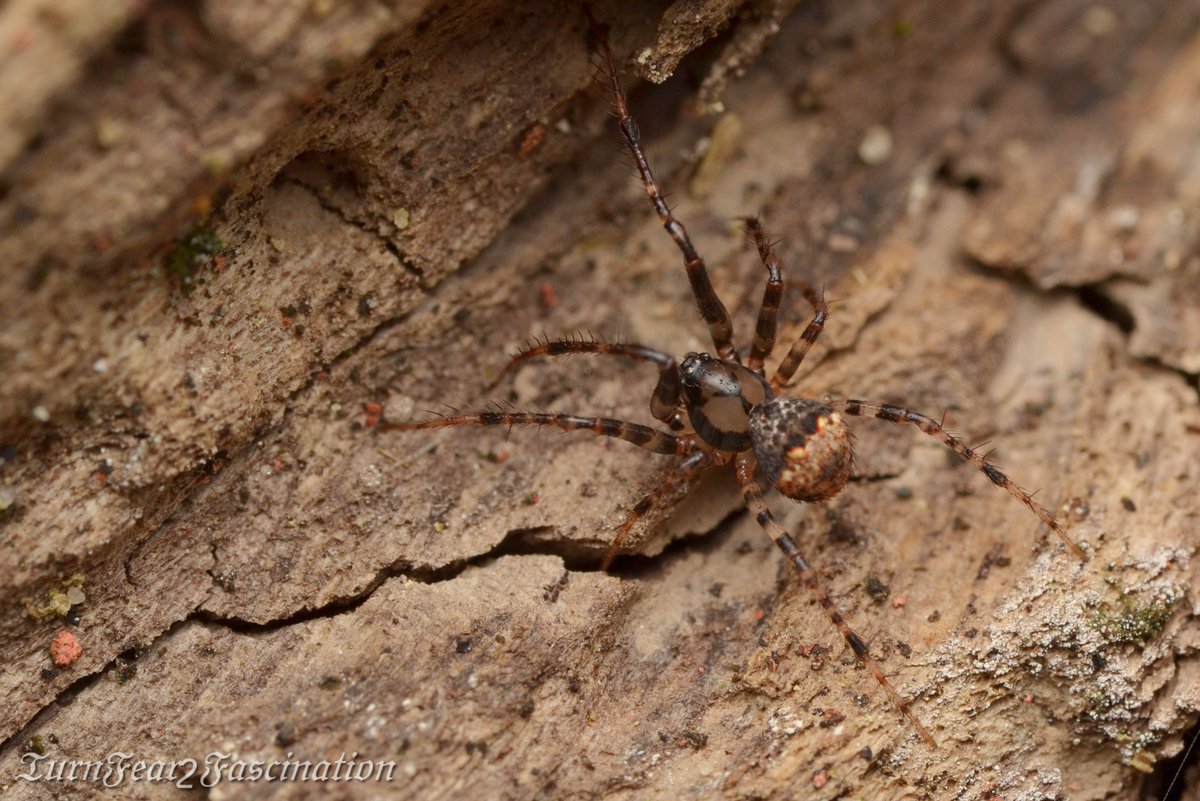 " title="In the UK we have 4 species of the araneophagic pirate spider Ero.Ero aphana, E.tuberculata, E.furcata and E.cambridgei. #Educate #TurnFear2Fascination and #LoveSpiders #Thread https://abs.twimg.com/emoji/v2/... draggable="false" alt="👇" title="Down pointing backhand index" aria-label="Emoji: Down pointing backhand index">">
" title="In the UK we have 4 species of the araneophagic pirate spider Ero.Ero aphana, E.tuberculata, E.furcata and E.cambridgei. #Educate #TurnFear2Fascination and #LoveSpiders #Thread https://abs.twimg.com/emoji/v2/... draggable="false" alt="👇" title="Down pointing backhand index" aria-label="Emoji: Down pointing backhand index">">
